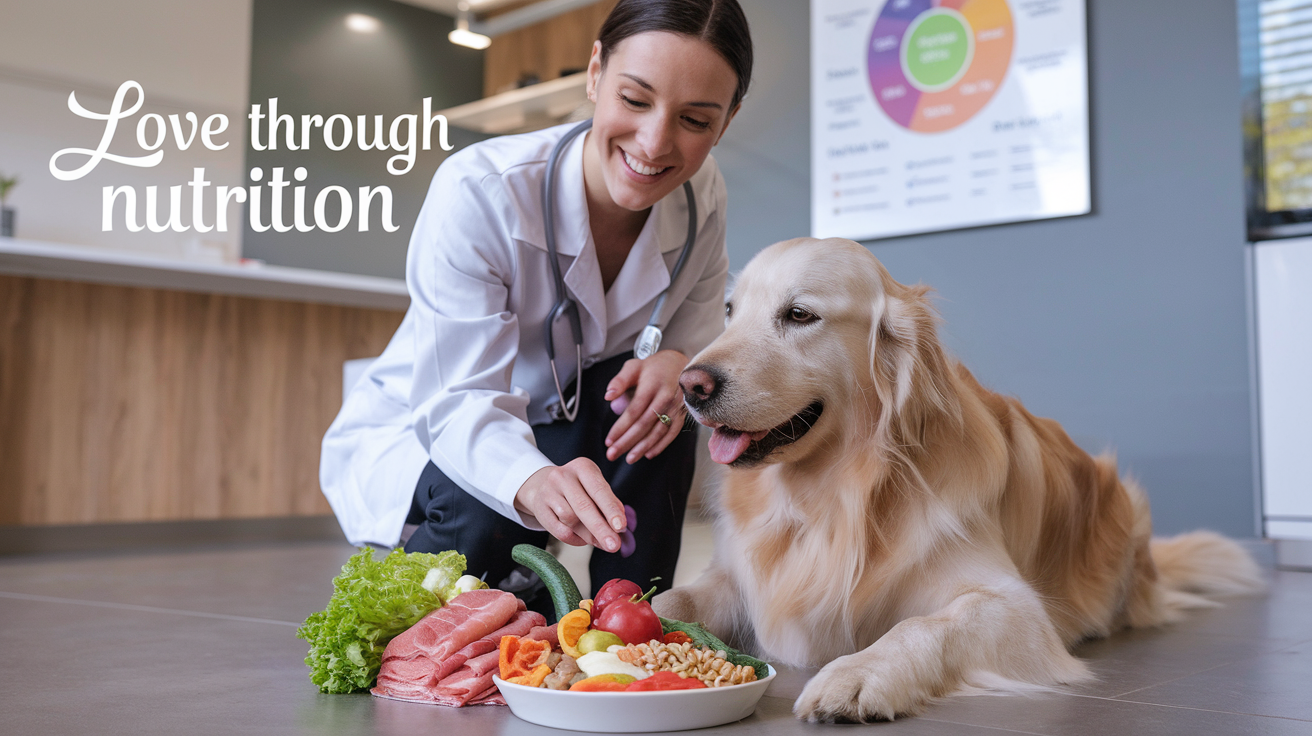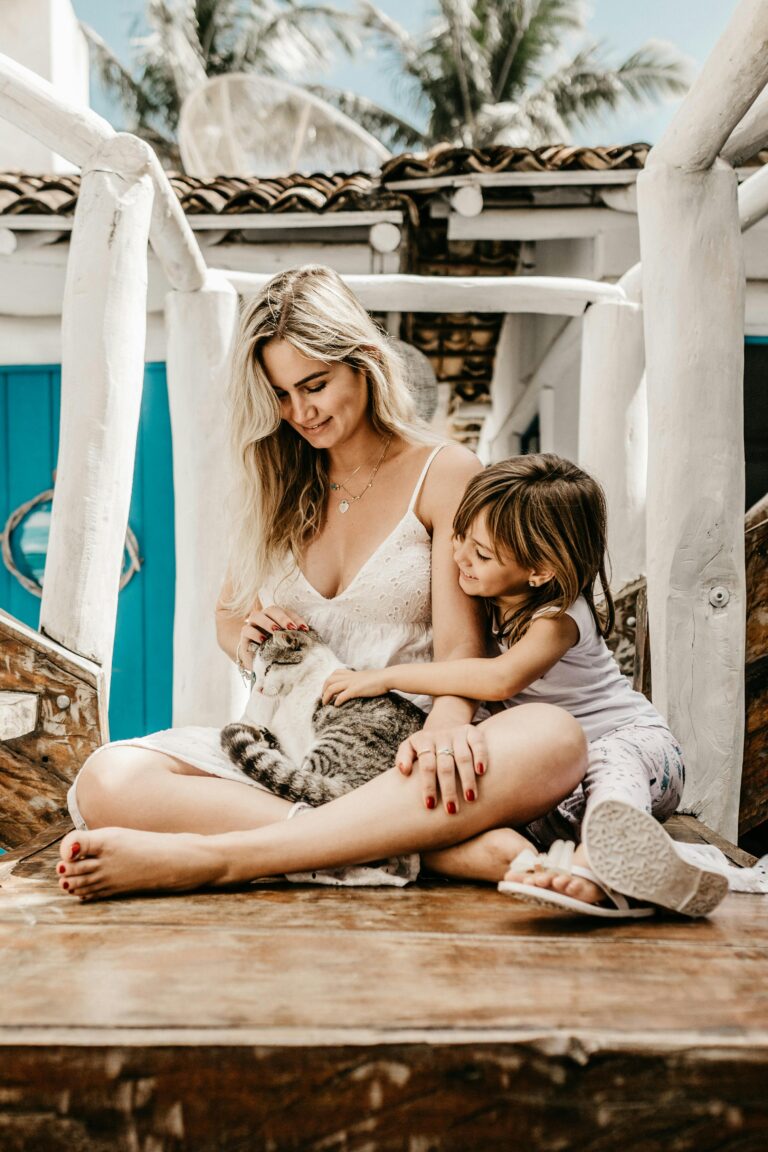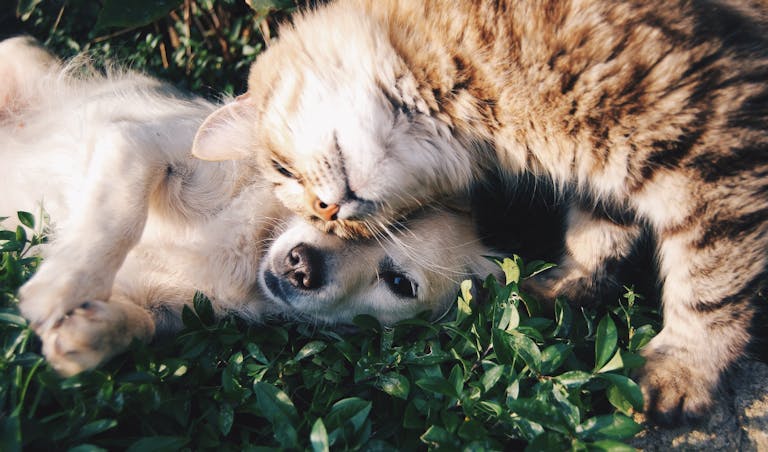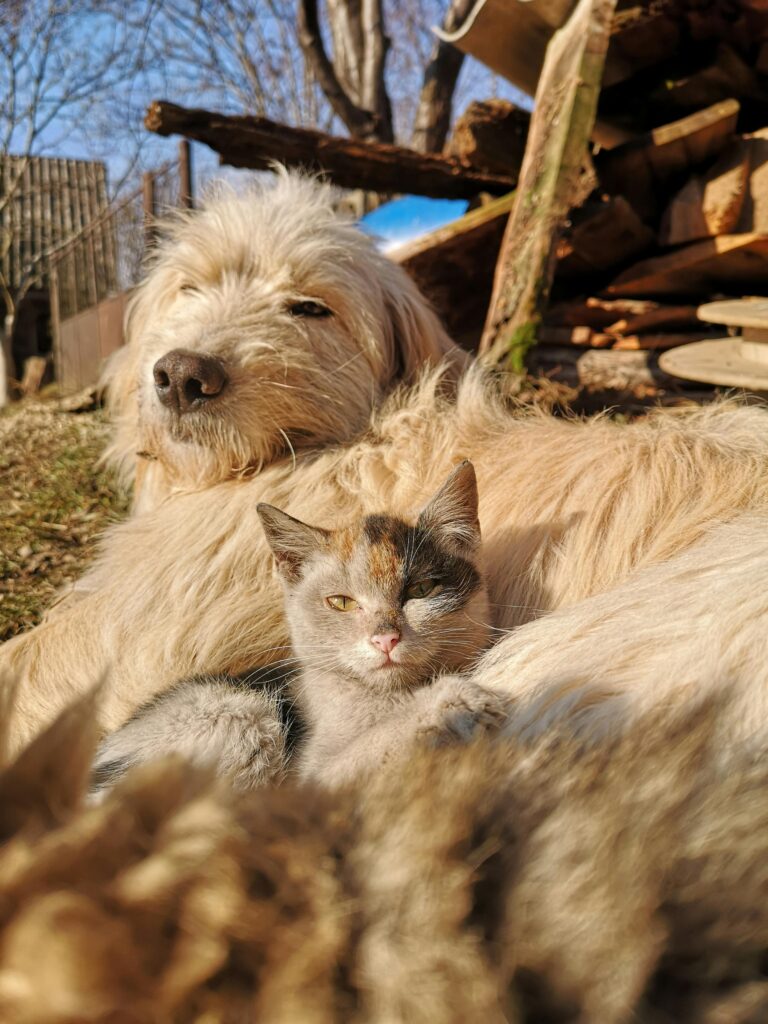Because Good Food = A Happy, Healthy Pet. Pets? They’re family. And just like we want the best for the people we love, we should want the same for our furry best friends. One of the easiest ways to show love? Nutrition. It’s more than just filling their bowl—it’s about giving them food that helps them live longer, feel better, and wag their tails a little harder.
But with all the pet food options out there, it’s easy to feel lost. Raw? Kibble? Grain-free? What even is a by-product? Don’t stress. I’ve got you. Let’s talk about five simple ways you can improve your pet’s diet and, in turn, their happiness.
Nutrition plays a crucial role in your pet’s overall health and happiness. By focusing on what goes into their bowl, you can significantly improve their quality of life and strengthen your bond. From selecting premium ingredients to tailoring meals for their unique needs, there are numerous ways to demonstrate your love through food. Let’s explore five effective strategies to nourish your pet with love, ensuring they thrive and feel cherished every single day.
Feed Them Real, Quality Ingredients
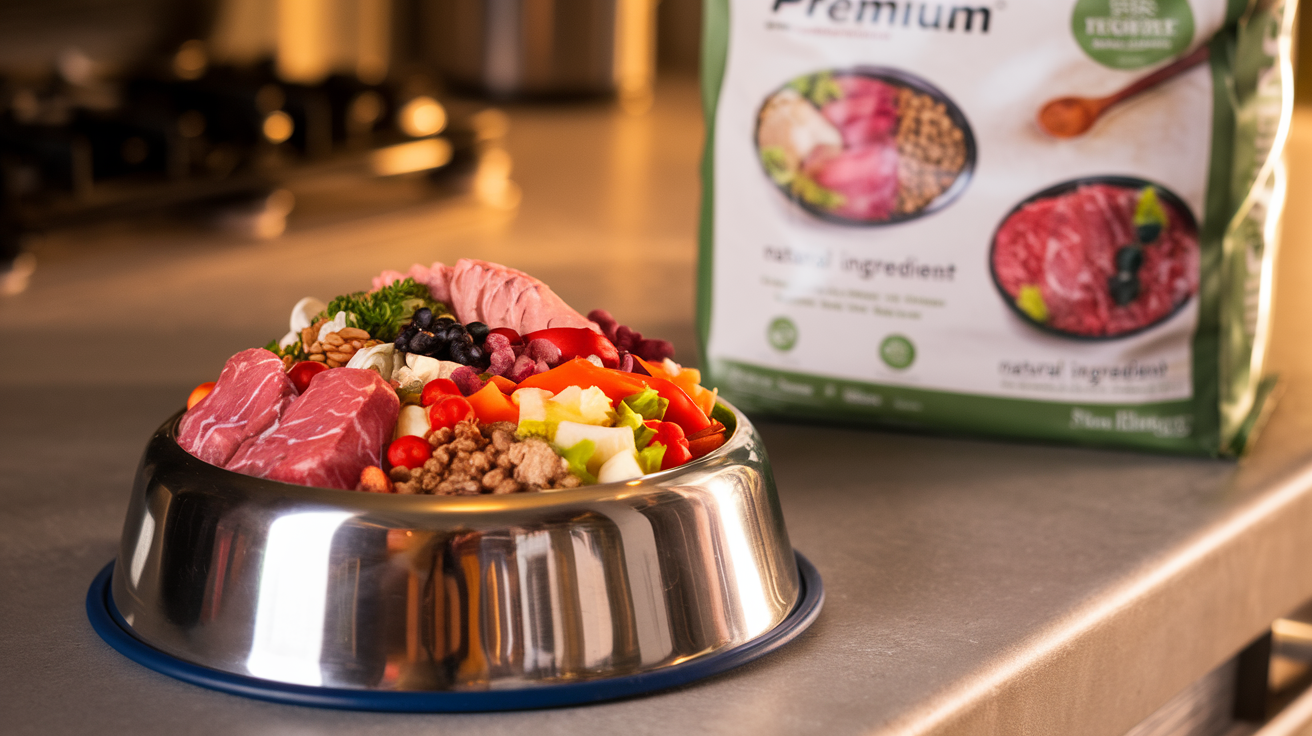
Ever looked at the ingredients on your pet’s food bag? It’s like reading another language. “Meat by-products,” “corn gluten meal,” “artificial flavors.” Sounds… not great, right?
Here’s the deal: Many commercial pet foods are packed with fillers and low-quality ingredients. Sure, they’ll keep your pet alive, but they won’t help them thrive.
So what should you do? Go for food with real meat as the first ingredient. Chicken, beef, fish—something you’d actually eat yourself. Avoid mystery meats, artificial additives, and cheap fillers like corn and soy. Whole foods = better digestion, shinier coats, and more energy.
Fresh, whole foods offer numerous advantages for your pet:
- Higher nutrient content
- Improved digestion
- Better coat and skin health
- Increased energy levels
- Reduced risk of chronic diseases
Want to take it up a notch? Try adding fresh, human-grade foods into their diet. A little shredded chicken, some steamed carrots, or a spoonful of pumpkin can do wonders. Just make sure it’s safe for them!
What to Look for in Pet Food
When selecting pet food, consider the following factors:
| Factor | Description |
|---|---|
| Ingredient List | Look for named meat sources as the first ingredient |
| Nutritional Balance | Ensure the food meets AAFCO standards |
| Preservatives | Opt for natural preservatives like vitamin E |
| Source | Choose foods made with locally-sourced ingredients |
Practical Takeaway
To incorporate high-quality, fresh ingredients into your pet’s diet:
- Gradually introduce fresh foods alongside their regular meals
- Start with small portions of pet-safe fruits and vegetables
- Consider homemade meals or fresh pet food delivery services
- Consult with your veterinarian for personalized recommendations
By prioritizing fresh, high-quality ingredients, you’re taking a crucial step in showing love through nutrition for your pet. This foundation sets the stage for optimal health and well-being throughout their life.
Balance Is Everything—Just Like for Us
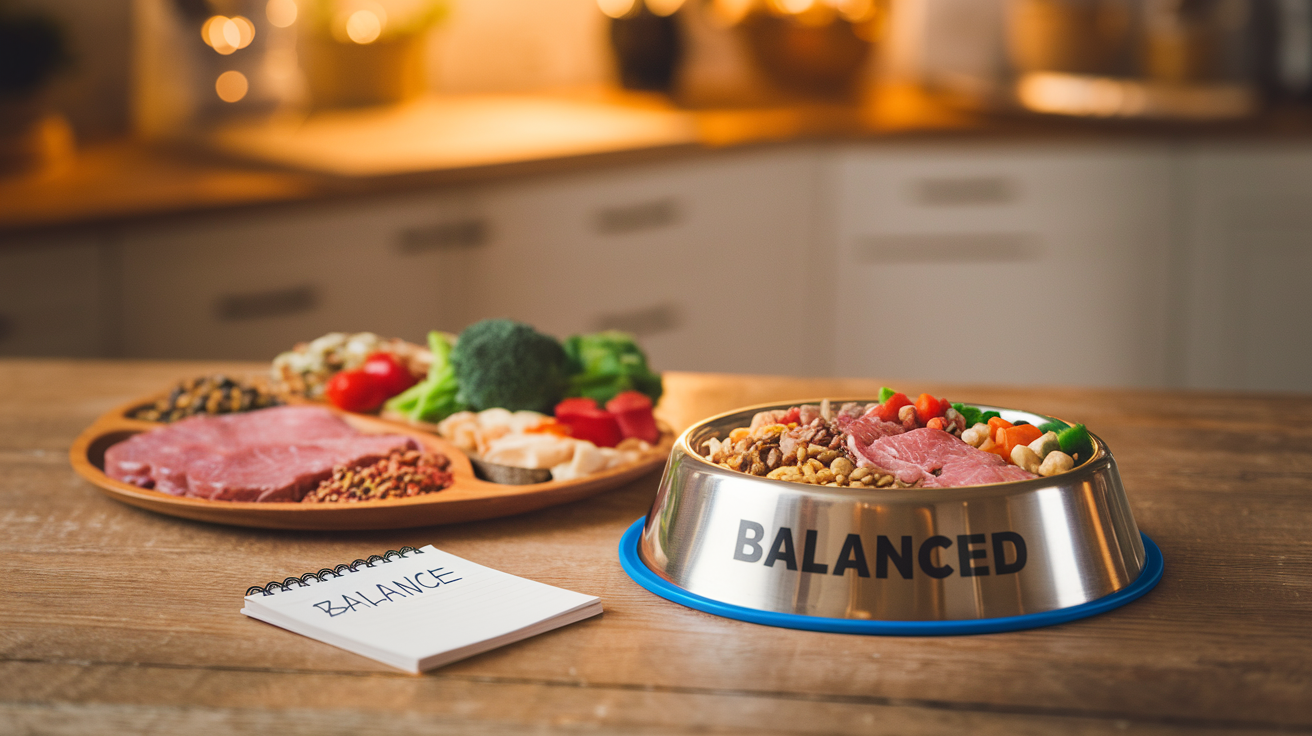
Imagine eating only protein shakes every day. You’d be missing out on key nutrients, right? Same goes for pets. They need a balanced mix of protein, healthy fats, vitamins, and minerals to stay strong. A well-balanced diet provides the necessary nutrients for optimal bodily functions, supports the immune system, and promotes longevity. Proper nutrition can prevent various health issues and enhance your pet’s quality of life.
Key Nutrients to Focus On
- Protein: Essential for muscle, energy, and keeping your pet feeling good. Think chicken, beef, fish, or lamb—not plant-based fillers.
- Healthy fats: Omega-3s from fish oil or flaxseed help with brain function, skin, and joints.
- Vitamins & minerals: Foods like carrots, eggs, and bone broth give them the nutrients they need.
Understanding Life Stage Nutrition
Nutritional needs vary depending on your pet’s life stage:
- Puppies/Kittens: Higher protein and calorie needs for growth
- Adult pets: Balanced maintenance diet
- Senior pets: Lower calorie, higher fiber diets
Consult with your veterinarian to create a tailored nutrition plan for your pet. Regularly reassess and adjust their diet as they age or their health needs change. Remember, a balanced diet is a key expression of love for your furry companion.
If you’re feeding store-bought food, check if it’s “complete and balanced” (it should meet AAFCO standards). Making homemade meals? Talk to a vet or pet nutritionist to be sure your pet is getting everything they need.
Support Gut Health
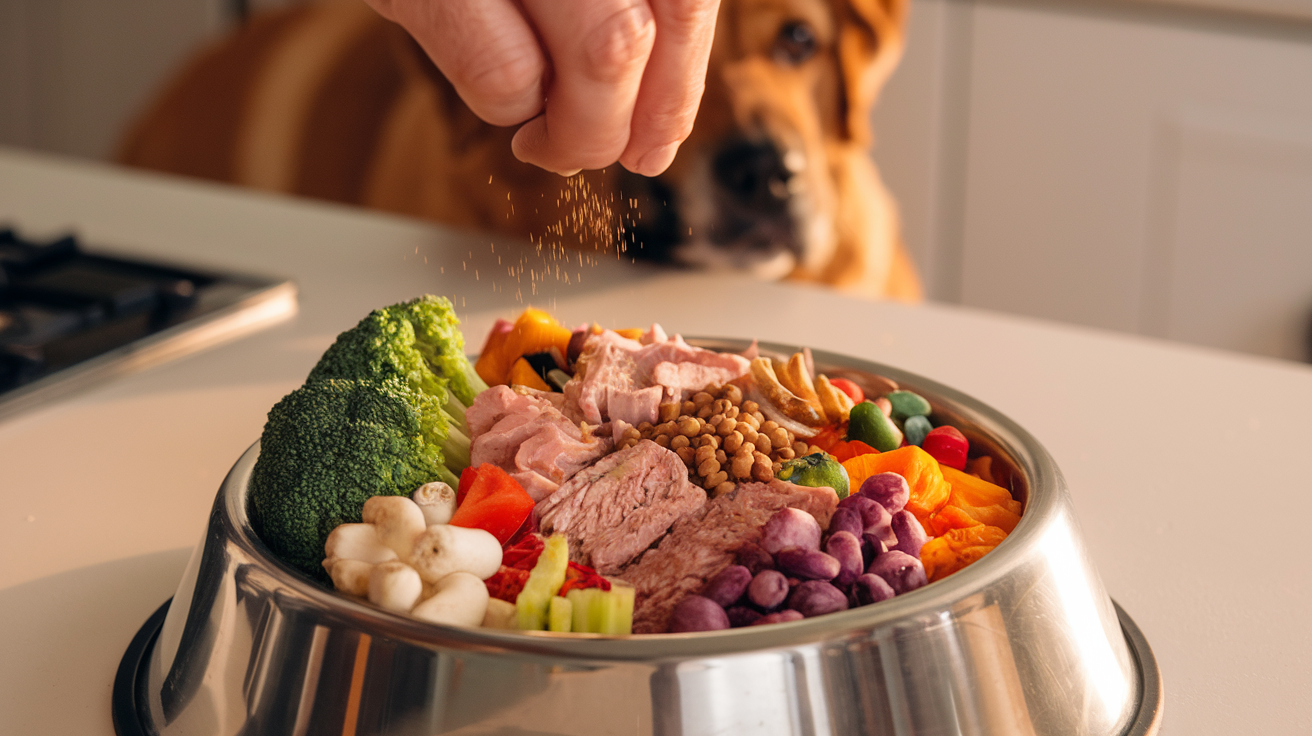
You ever eat something bad and feel awful all day? Pets get that too. And their gut health plays a huge role in digestion, immunity, and even mood. How to help? Add probiotics and digestive enzymes to their diet. These help break down food and keep their stomachs running smoothly. Some great gut-friendly foods:
- Yogurt (plain, no sugar)
- Pumpkin (great for digestion)
- Fermented foods like kefir
- Fiber-rich veggies (like sweet potatoes)
- Omega-3 fatty acids (Fish oil, flaxseed, chia seeds, supports gut lining, reduce inflammation)
If your pet has chronic tummy troubles—diarrhea, gas, bloating—it might be time to tweak their diet.
Watch Out for Hidden Junk in Pet Food
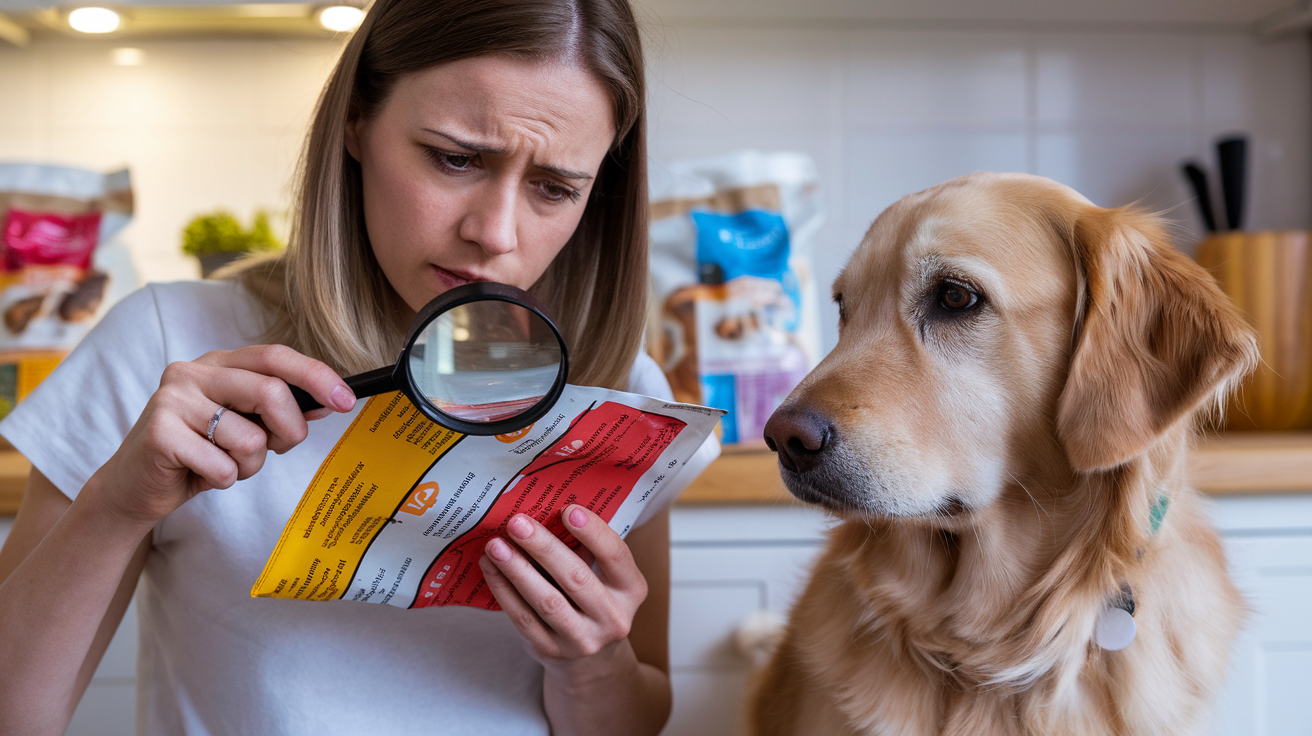
Just because it’s sold as pet food doesn’t mean it’s good pet food. Many brands sneak in harmful ingredients that can lead to long-term health problems.
Avoiding harmful ingredients and toxins in your pet’s diet is crucial for their overall health and well-being. By being vigilant about what goes into your pet’s food bowl, you’re not just showing love; you’re actively protecting them from potential health risks.
Common Red Flags to Avoid:
Artificial colors & flavors (BHA, BHT, Ethoxyquin. no reason for them to be there)
Meat by-products (basically leftover scraps)
Excess grains like corn, wheat, or soy (low-quality fillers)
Unnecessary additives & preservatives
Hidden Toxins in Pet Food and Treats
Many pet owners are unaware of hidden toxins lurking in seemingly innocent foods:
| Food Item | Hidden Toxin | Potential Effect |
|---|---|---|
| Grapes/Raisins | Unknown compound | Kidney failure |
| Chocolate | Theobromine | Cardiac issues, seizures |
| Xylitol (sweetener) | Xylitol | Rapid insulin release, liver failure |
| Onions/Garlic | Thiosulfate | Anemia |
Not all pet food is created equal. Do a little research, check ingredient lists, and choose brands that use real, whole ingredients. Your pet’s health is worth it.
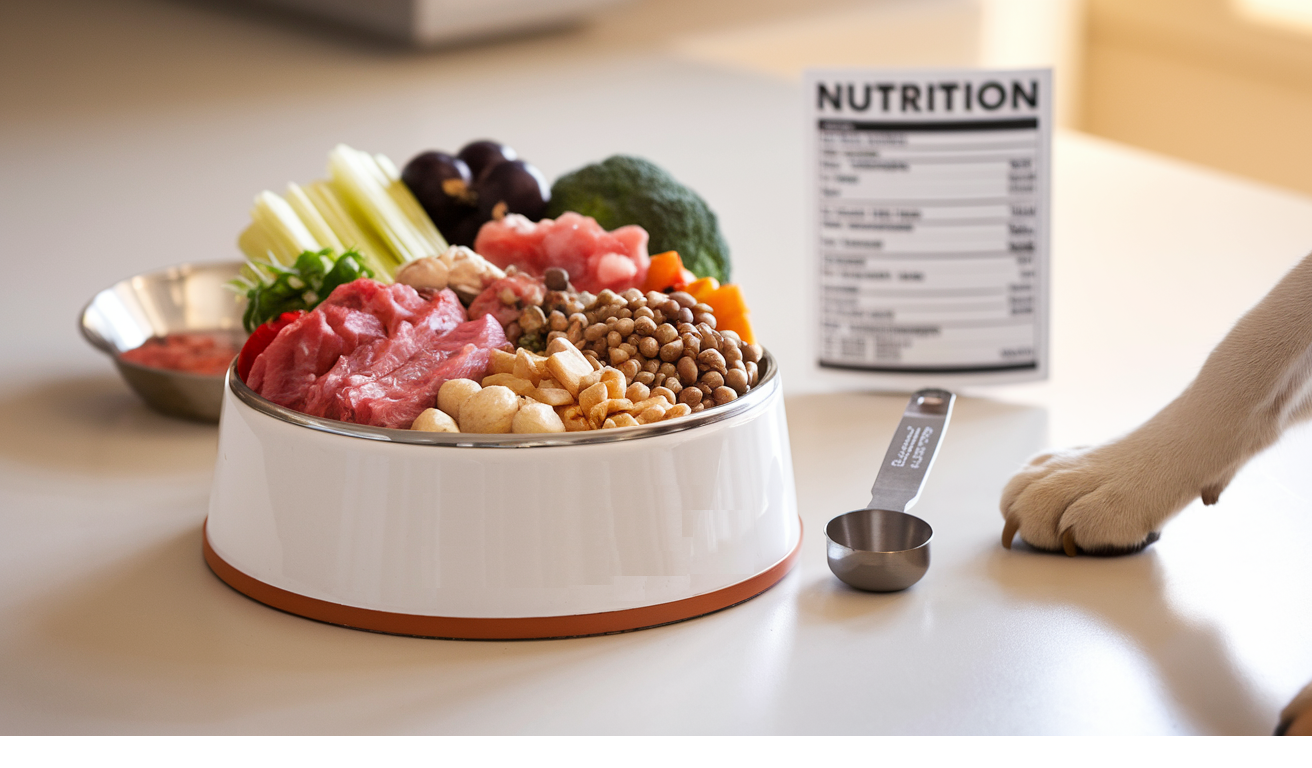
Personalize Your Pet’s Nutrition for Specific Needs
Why It Matters
Personalizing your pet’s nutrition is crucial for their overall health and well-being. Every pet is unique, with specific dietary requirements based on factors such as age, breed, size, and health conditions. By tailoring their diet, you can address their individual needs and potentially prevent or manage health issues.
Examples of Personalized Nutrition Needs
Different pets have varying nutritional requirements. Here are some examples:
- Senior pets: Lower calorie needs, joint support
- Puppies and kittens: Higher protein and calorie requirements
- Overweight pets: Low-fat, high-fiber diets
- Pets with allergies: Limited ingredient or hypoallergenic diets
How to Tailor Nutrition
Here’s how to adjust their diet based on their needs:



Here’s a comparison of nutritional needs for different life stages:
| Life Stage | Protein | Fat | Calories |
|---|---|---|---|
| Puppy/Kitten | High | High | High |
| Adult | Moderate | Moderate | Moderate |
| Senior | Moderate | Low | Low |
If you’re unsure what’s best for your pet, ask your vet or a pet nutrition specialist! A few tweaks in their diet can make a world of difference.
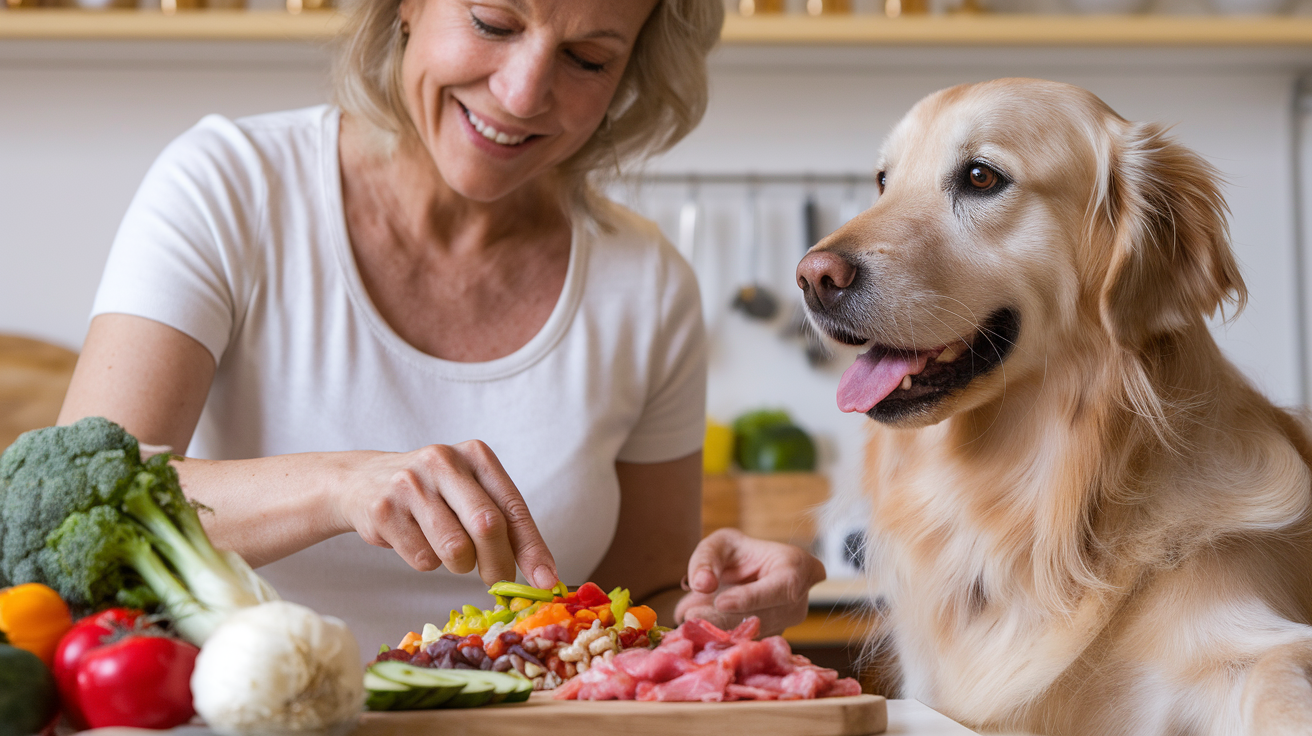
At the end of the day, feeding your pet isn’t just about filling their bowl. It’s about nourishing them, keeping them healthy, and showing love in a way they understand.
Want to make a small change today? Try:
Checking the ingredients on their food.
Swapping out processed treats for fresh ones.
Adding a little gut-friendly food to their meal.
Start paying attention to how your pet reacts to their food. Are they full of energy, or do they seem sluggish? Is their coat shiny, or are they scratching all the time? Try keeping a food journal to track what works and what doesn’t.
And don’t forget—your pet’s needs will change over time. Regular vet check-ups can help you tweak their diet so they always get what’s best for them. Because when they eat well, they feel well. And that means more tail wags, purrs, and happy moments together.
Further Reading
Becker, K. & Spendlove, B. (2013). Real Food for Healthy Dogs and Cats: Simple Homemade Food.
National Research Council. (2006). Nutrient Requirements of Dogs and Cats.
Functional and Integrative Veterinary Nutrition. (2022).
How Personalized Nutrition Strengthens the Bond Between You and Your Pet.

